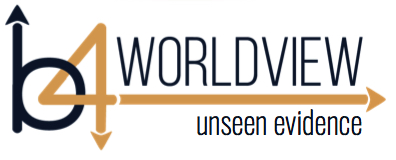
Key Thought for this session:
“If any outcome of life is acceptable to me, then any path will get me there.”
Think about it this way. It’s like the idea of a storyteller who desires to communicate his thoughts to others and chooses to do so by creating a story in which those thoughts are shared. He (or she, whatever the case may be) chooses to do this in story form in order to more richly illustrate the various ways in which his thoughts might be more deeply understood ... by painting them on a fictional canvass of human activity and emotion. When others hear the story, they will attempt to interpret it. For reasons we have been discussing since the beginning of this course, different people, because of their different experiences and biases, will conclude different things about what the storyteller intended to communicate. They might even end up arguing with each other about what the storyteller’s intent was. Ultimately, the only way to know for sure about what the storyteller intended would be to actually ask him—right? Everyone else may have an opinion, but if we really want to know the truth of what the storyteller intended, the storyteller will have to tell us.
If we look back at the story of the architect and the workers from session one, the storyteller is trying to communicate to us a particular truth about the architect and his project. We know that because of the context in which this story was written in the original literature. The question we want to consider here is, “Does there exist some absolute truth about what the storyteller intended to communicate about the architect?” Would it make sense to say that the storyteller’s explanation of the architect would just be his or her opinion, and that what is actually true about the architect should be left up to what anyone else thinks might be true? After all, the architect is the fictional creation of the storyteller and does not really exist apart from the storyteller’s intention.
In actuality, the storyteller does believe there is a specific truth about the architect and he wants you to know what it is. That’s the point of telling you the story. The storyteller, as the originator of the architect, shares knowledge through telling this story. There is no scientific evidence we can rely on to know if this is true or not. If we want to recognize and believe what he meant to be true about the architect, then we have to believe the storyteller. If we believe truth is relative, then we wouldn’t rely on the storyteller to tell us what he meant to be true concerning the architect, but we would instead value the analysis of what others conclude he meant—which as we have seen is influenced by their worldviews and possible emotional involvement in the story—such as their reaction to how the workers were paid.
If truth is dependent on the observer, then there would be no single truth about the architect, and truth would be relative to the perspectives of the various observers of the story. This is one reason relative truth is difficult to embrace.
Just like the concept of gravity that we discussed before, if someone doesn’t believe in gravity, it is still true. And in this arena of storytelling, it is also the same that just because one chooses not to accept the storyteller’s claim about his intentions, it doesn’t change the storyteller’s intentions.
So, who has a more valid knowledge of the truth intended by the storyteller about the architect: the storyteller or someone else who is analyzing the story? (Remember from your own experiences in Session One, an observer’s perspective is influenced by their worldviews and emotional involvement in the story.)